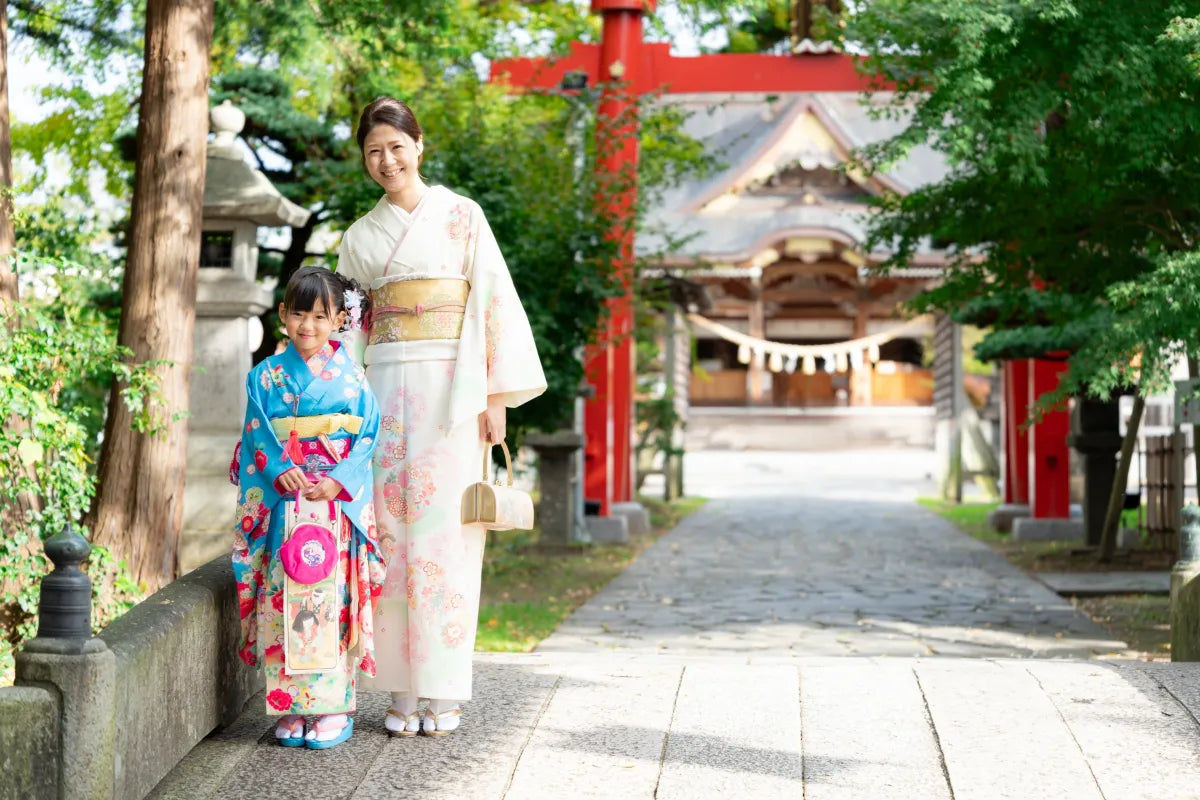
Celebrating Children’s Growth in Japan — The Tradition of Shichi-Go-San
What Is Shichi-Go-San? — Japan’s November Celebration for Children
In November, it’s common to see children dressed in bright, formal kimono visiting shrines across Japan. Families take photos, offer prayers, and celebrate this special day called Shichi-Go-San (“Seven-Five-Three”), a traditional event that honors the healthy growth of children.
The Origins of Shichi-Go-San

Shichi-Go-San is a celebration in which families give thanks and offer prayers for children aged three, five, and seven. In ancient Japan, people believed that a child’s safe growth was a divine blessing. During the Heian period (around 1,000 years ago), aristocratic families held rites such as the “Kamioki no Gi,” a ceremony marking the moment when a child was first allowed to grow out their hair. Over time, these noble customs spread among common people and eventually evolved into the Shichi-Go-San celebration we know today.
Why November 15?
The official date of Shichi-Go-San is November 15, a day traditionally considered auspicious and lucky in Japan. Today, however, many families visit shrines on the weekends throughout November, and during this period, shrines nationwide are filled with children in colorful kimono and proud families taking photos.
The Meaning Behind the “Longevity Candy”


carry long paper bags filled with thin red-and-white candies called Chitose Ame (“Thousand-Year Candy”). These sweets symbolize the wish for a long and healthy life. The bags often feature traditional Japanese motifs such as cranes, turtles, and pine-bamboo-plum (Shochikubai), each representing longevity, prosperity, and good fortune — symbols deeply cherished in Japanese culture.
The Symbolism of the Kikkō Pattern
Among these motifs, the turtle holds a special place as a symbol of longevity. As the saying goes, “Cranes live for a thousand years, turtles for ten thousand.” The turtle’s hexagonal shell inspired the Kikkō pattern, a design that has been used since ancient times on armor, kimono, and crafts. Its endless chain of hexagons represents eternity, stability, and prosperity — a timeless wish for happiness passed down through generations.

Ikedaya’s Kōshū Inden and Auspicious Patterns of Japan

- Kōshū Inden Key Case

- Kōshū Inden Long Wallet
IIkedaya offers small leather goods featuring these traditional motifs using the Kōshū Inden technique — a 400-year-old Japanese craft of painting designs in lacquer on deerskin.
The Kikkō-pattern wallets and key cases carry the same wish for long-lasting happiness celebrated in Shichi-Go-San.
When visiting Japan in November, take a moment to enjoy the sight of families celebrating Shichi-Go-San at shrines, and notice how the spirit of “good fortune” lives on in traditional Japanese designs.
※Kikkō-pattern Kōshū Inden items are available at Ikedaya’s stores in Shizuoka, Hamamatsu, and Ginza.



